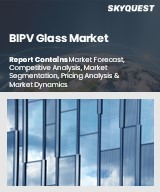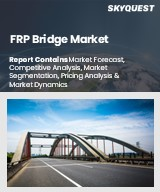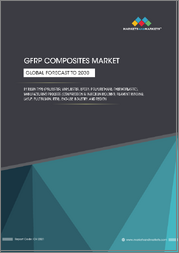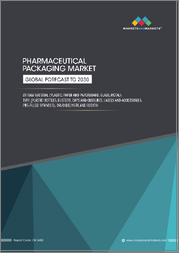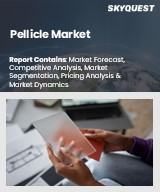
|
시장보고서
상품코드
1573043
붕규산 유리 시장 : 유형, 등급, 최종사용자 산업별 - 세계 예측(2025-2030년)Borosilicate Glass Market by Type (Amber Borosilicate Glass, Colored Borosilicate Glass, Transparent Borosilicate Glass), Grade (Borosilicate 3.3, High Silica Borosilicate, Neutral Borosilicate Glass), End-User Industry - Global Forecast 2025-2030 |
||||||
붕규산 유리 시장은 2023년에 19억 8,000만 달러로 평가되며, 2024년에는 21억 달러에 달할 것으로 예측되며, CAGR 7.43%로 성장하며, 2030년에는 32억 7,000만 달러에 달할 것으로 예측됩니다.
붕규산 유리는 실리카와 삼산화붕소를 함유한 유리의 일종으로, 열충격에 대한 뛰어난 내성을 가능하게 하여 일반 유리보다 내구성과 내열성을 크게 향상시킵니다. 이 유리는 실험실 기기, 주방 용품, 조명기구, 태양전지판 및 광섬유와 같은 첨단 기술 용도 등 다양한 분야에서 사용되고 있습니다. 우수한 화학적 안정성으로 인해 헬스케어 산업에서 의약품 포장에 널리 사용되고 있습니다. 시장 범위는 극한의 온도와 화학적 상호 작용에 견딜 수 있는 견고한 유리를 필요로 하는 산업으로 확장되어 국내 및 산업계에서의 관련성을 높이고 있습니다. 신흥 국가 시장의 성장 요인으로는 연구소 인프라 구축, 반도체 생산 증가, 내구소비재 수요 증가 등을 꼽을 수 있습니다. 붕규산유리가 태양열 조수 및 태양광발전 용도로 활용되는 것처럼, 태양전지 기술의 발전은 중요한 비즈니스 기회를 창출하고 있습니다. 기업은 협력 관계를 강화하고 산업 활동이 확대되고 있는 신흥 시장에 진출하여 이러한 기회를 활용해야 합니다. 그러나 높은 생산 및 가공 비용과 제한된 원자재 가용성은 시장 성장에 걸림돌이 되고 있으며, 이는 광범위한 적용과 경제 규모 확대에 걸림돌이 되고 있습니다. 또한 유리 제조에 대한 환경 규제가 또 다른 도전이 되고 있습니다. 붕규산 유리의 재활용 공정은 지속가능한 관행과 비용 효율성을 높이는 기술 혁신의 큰 잠재력을 가지고 있습니다. 또한 생산 비용을 낮추고 적용 범위를 넓히기 위한 첨단 제조 기술을 연구하는 것은 매우 유익합니다. 시장 경쟁은 중간에서 높은 수준이며, 주요 업계 기업은 생산 능력을 확장하고 혁신적인 솔루션을 개발하기 위해 투자하고 있습니다. 이러한 산업 역학을 파악하고 새로운 기술을 활용하면 기업은 붕규산 유리 시장의 최전선에 서게 될 것입니다.
| 주요 시장의 통계 | |
|---|---|
| 기준년[2023] | 19억 8,000만 달러 |
| 예측년[2024] | 21억 달러 |
| 예측년[2030] | 32억 7,000만 달러 |
| CAGR(%) | 7.43% |
시장 역학: 빠르게 진화하는 붕규산 유리 시장의 주요 시장 인사이트 공개
붕규산 유리 시장은 수요 및 공급의 역동적인 상호작용에 의해 변화하고 있습니다. 이러한 시장 역학의 진화를 이해함으로써 기업은 정보에 입각한 투자 결정, 전략적 의사결정 및 새로운 비즈니스 기회를 포착할 수 있습니다. 이러한 동향을 종합적으로 파악함으로써 기업은 정치적, 지역적, 기술적, 사회적, 경제적 영역에 걸친 다양한 리스크를 완화하고, 소비자 행동과 그것이 제조 비용 및 구매 동향에 미치는 영향을 보다 명확하게 이해할 수 있습니다.
- 시장 성장 촉진요인
- 연구개발 활동의 활성화로 실험용 유리제품 수요 증가
- 내화학성이 우수한 붕규산 유리의 의약품 포장용 붕규산 유리의 채택 증가
- 붕규산 유리의 인기를 높이는 친환경적이고 재활용 가능한 소재로의 변화
- 시장 성장 억제요인
- 높은 생산 비용과 가공 비용
- 시장 기회
- 소비자 전자제품 및 스마트 기기 혁신
- 재생에너지 분야에서의 활용 확대
- 시장 과제
- 공급망 혼란과 물류의 도전 과제
Porter's Five Forces : 붕규산 유리 시장을 탐색하는 전략적 툴
Portre's Five Forces 프레임워크는 시장 상황경쟁 구도를 이해하는 중요한 툴입니다. Portre's Five Forces 프레임워크는 기업의 경쟁력을 평가하고 전략적 기회를 탐색할 수 있는 명확한 방법을 제공합니다. 이 프레임워크는 기업이 시장내 세력도를 평가하고 신규 사업의 수익성을 판단하는 데 도움이 됩니다. 이러한 인사이트을 통해 기업은 강점을 활용하고, 약점을 해결하고, 잠재적인 도전을 피하고, 보다 강력한 시장 포지셔닝을 확보할 수 있습니다.
PESTLE 분석 : 붕규산 유리 시장에서 외부의 영향 파악
외부 거시 환경 요인은 붕규산 유리 시장의 성과 역학을 형성하는 데 매우 중요한 역할을 합니다. 정치적, 경제적, 사회적, 기술적, 법적, 환경적 요인에 대한 분석은 이러한 영향을 탐색하는 데 필요한 정보를 제공하며, PESTLE 요인을 조사함으로써 기업은 잠재적인 위험과 기회를 더 잘 이해할 수 있습니다. 이러한 분석을 통해 기업은 규제, 소비자 선호도, 경제 동향의 변화를 예측하고 선제적이고 적극적인 의사결정을 내릴 준비를 할 수 있습니다.
시장 점유율 분석 붕규산 유리 시장 경쟁 구도 파악
붕규산 유리 시장의 상세한 시장 점유율 분석을 통해 공급업체의 성과를 종합적으로 평가할 수 있습니다. 기업은 매출, 고객 기반, 성장률과 같은 주요 지표를 비교하여 경쟁적 위치를 파악할 수 있습니다. 이 분석은 시장의 집중화, 단편화, 통합의 추세를 파악할 수 있으며, 공급업체는 치열한 경쟁 속에서 자신의 입지를 강화할 수 있는 전략적 의사결정을 내리는 데 필요한 인사이트을 얻을 수 있습니다.
FPNV 포지셔닝 매트릭스 붕규산 유리 시장에서 벤더의 성과 평가
FPNV 포지셔닝 매트릭스는 붕규산 유리 시장에서 공급업체를 평가하는 중요한 툴입니다. 이 매트릭스를 통해 비즈니스 조직은 벤더의 비즈니스 전략과 제품 만족도를 기반으로 평가하여 목표에 부합하는 정보에 입각한 의사결정을 내릴 수 있으며, 4개의 사분면으로 벤더를 명확하고 정확하게 세분화하여 전략적 목표에 가장 적합한 파트너와 솔루션을 식별할 수 있습니다. 전략 목표에 가장 적합한 파트너와 솔루션을 식별할 수 있습니다.
전략 분석 및 추천 붕규산 유리 시장에서 성공의 길을 그리는 전략 분석 및 권장 사항
붕규산 유리 시장의 전략적 분석은 세계 시장에서 입지를 강화하고자 하는 기업에게 필수적입니다. 주요 자원, 역량 및 성과 지표를 검토함으로써 기업은 성장 기회를 식별하고 개선할 수 있습니다. 이러한 접근 방식을 통해 경쟁 환경의 도전을 극복하고 새로운 비즈니스 기회를 활용하여 장기적인 성공을 거둘 수 있도록 준비할 수 있습니다.
이 보고서는 주요 관심 분야를 포괄하는 시장에 대한 종합적인 분석을 제공하고 있습니다. :
1. 시장 침투도 : 현재 시장 환경의 상세한 검토, 주요 기업의 광범위한 데이터, 시장 도달 범위 및 전반적인 영향력 평가.
2. 시장 개척도: 신흥 시장에서의 성장 기회를 파악하고, 기존 분야의 확장 가능성을 평가하며, 미래 성장을 위한 전략적 로드맵을 제공합니다.
3. 시장 다각화 : 최근 제품 출시, 미개척 지역, 업계의 주요 발전, 시장을 형성하는 전략적 투자를 분석합니다.
4. 경쟁 평가 및 정보 : 경쟁 구도를 철저히 분석하여 시장 점유율, 사업 전략, 제품 포트폴리오, 인증, 규제 당국의 승인, 특허 동향, 주요 기업의 기술 발전 등을 검토합니다.
5. 제품 개발 및 혁신 : 미래 시장 성장을 가속할 것으로 예상되는 첨단 기술, 연구개발 활동 및 제품 혁신을 강조합니다.
이해관계자들이 충분한 정보를 바탕으로 의사결정을 내릴 수 있도록 다음과 같은 중요한 질문에 대한 답변도 제공하고 있습니다. :
1. 현재 시장 규모와 향후 성장 전망은?
2. 최고의 투자 기회를 제공하는 제품, 부문, 지역은?
3. 시장을 형성하는 주요 기술 동향과 규제의 영향은?
4. 주요 벤더 시장 점유율과 경쟁 포지션은?
5.벤더 시장 진입 및 철수 전략의 원동력이 되는 수입원과 전략적 기회는 무엇인가?
목차
제1장 서문
제2장 조사 방법
제3장 개요
제4장 시장의 개요
제5장 시장 인사이트
- 시장 역학
- 촉진요인
- 연구개발 활동의 증가에 의해 실험용 유리 기구의 수요가 증가
- 우수한 내약품성에 의해 의약품 포장에서 붕규산 유리의 채택이 증가
- 환경을 생각하게 재활용 가능한 소재로의 이동에 의해 붕규산 유리의 인기가 높아지고 있다.
- 억제요인
- 생산·가공 비용이 높다
- 기회
- 가전제품과 스마트 디바이스 혁신
- 재생에너지 분야에서 애플리케이션의 급증
- 과제
- 공급망 혼란과 물류상 과제
- 촉진요인
- 시장 세분화 분석
- Porter's Five Forces 분석
- PESTLE 분석
- 정치적
- 경제
- 사회적
- 기술적
- 법률상
- 환경
제6장 붕규산 유리 시장 : 유형별
- 앰버 붕규산 유리
- 컬러 붕규산 유리
- 투명 붕규산 유리
제7장 붕규산 유리 시장 : 등급별
- Borosilicate 3.3
- High Silica Borosilicate
- Neutral Borosilicate Glass
- 유형 7740
제8장 붕규산 유리 시장 : 최종사용자 산업별
- 자동차
- 건축·건설
- 일렉트로닉스 및 반도체
- 에너지·유틸리티
- 식품 및 음료
- 헬스케어·의약품
- 광학·레이저 산업
- 과학 조사
제9장 아메리카 붕규산 유리 시장
- 아르헨티나
- 브라질
- 캐나다
- 멕시코
- 미국
제10장 아시아태평양붕규산 유리 시장
- 호주
- 중국
- 인도
- 인도네시아
- 일본
- 말레이시아
- 필리핀
- 싱가포르
- 한국
- 대만
- 태국
- 베트남
제11장 유럽, 중동 및 아프리카 붕규산 유리 시장
- 덴마크
- 이집트
- 핀란드
- 프랑스
- 독일
- 이스라엘
- 이탈리아
- 네덜란드
- 나이지리아
- 노르웨이
- 폴란드
- 카타르
- 러시아
- 사우디아라비아
- 남아프리카공화국
- 스페인
- 스웨덴
- 스위스
- 터키
- 아랍에미리트
- 영국
제12장 경쟁 구도
- 시장 점유율 분석, 2023년
- FPNV 포지셔닝 매트릭스, 2023년
- 경쟁 시나리오 분석
- 전략 분석과 제안
기업 리스트
- 1. AdValue Technology
- 2. AGC Inc.
- 3. Borosil Glass Works Ltd.
- 4. Corning Inc.
- 5. De Dietrich Process Systems
- 6. Duran Group
- 7. Gerresheimer AG
- 8. Hilgenberg GmbH
- 9. JSG - J. Schmalz GmbH
- 10. Kavalier Glass
- 11. Kimble Chase Life Science
- 12. Linuo Glassworks
- 13. NEG - Nippon Electric Glass
- 14. Nipro Corporation
- 15. Saint-Gobain
- 16. Schott AG
- 17. Sichuan Shubo Group
- 18. Thermo Fisher Scientific
- 19. Wilmad-LabGlass
- 20. Yancheng Huaou Industrial Group Co., Ltd.
The Borosilicate Glass Market was valued at USD 1.98 billion in 2023, expected to reach USD 2.10 billion in 2024, and is projected to grow at a CAGR of 7.43%, to USD 3.27 billion by 2030.
Borosilicate glass is a type of glass containing silica and boron trioxide which allows for its remarkable resistance to thermal shock, making it significantly more durable and heat-resistant than regular glass. This glass type holds vast necessity and application across numerous sectors, including laboratory apparatus, kitchenware, lighting, and high-tech applications like solar panels and fiber optics. It's widely utilized in the healthcare industry for pharmaceutical packaging due to its excellent chemical stability. The market scope extends to industries requiring heavy-duty glass servicing extreme temperatures and chemical interactions, enhancing its relevance in both domestic and industrial contexts. Influencing market growth factors include the rise in laboratory infrastructure developments, increased production of semiconductors, and the growing demand for durable consumer goods. Notably, advancements in solar technology spur significant opportunities as borosilicate glass is utilized in solar desalination and photovoltaic applications. Companies should capitalize on these opportunities by enhancing collaborations and penetrating emerging markets with growing industrial activities. However, market growth is challenged by the high cost of production and processing, coupled with the limited availability of raw materials, hampering broader application and economic scale. Additionally, environmental regulations concerning glass manufacturing pose further challenges. There is vast potential for innovation in recycling processes for borosilicate glass, enhancing sustainable practices and cost-efficiency. Moreover, research into advanced manufacturing technologies to lower production costs and broaden application scopes can prove highly beneficial. The nature of the market is characterized by moderate to high competition, with key industry players investing in expanding their production capabilities and developing innovative solutions. Keeping abreast with these industry dynamics and harnessing emerging technologies can position businesses at the forefront of the borosilicate glass market.
| KEY MARKET STATISTICS | |
|---|---|
| Base Year [2023] | USD 1.98 billion |
| Estimated Year [2024] | USD 2.10 billion |
| Forecast Year [2030] | USD 3.27 billion |
| CAGR (%) | 7.43% |
Market Dynamics: Unveiling Key Market Insights in the Rapidly Evolving Borosilicate Glass Market
The Borosilicate Glass Market is undergoing transformative changes driven by a dynamic interplay of supply and demand factors. Understanding these evolving market dynamics prepares business organizations to make informed investment decisions, refine strategic decisions, and seize new opportunities. By gaining a comprehensive view of these trends, business organizations can mitigate various risks across political, geographic, technical, social, and economic domains while also gaining a clearer understanding of consumer behavior and its impact on manufacturing costs and purchasing trends.
- Market Drivers
- Increasing demand for laboratory glassware due to growth in research and development activities
- Rising adoption of borosilicate glass in pharmaceutical packaging for its superior chemical resistance
- Shift towards eco-friendly and recyclable materials boosting the popularity of borosilicate glass
- Market Restraints
- High production and processing costs
- Market Opportunities
- Innovations in consumer electronics and smart devices
- Proliferating applications across renewable energy sectors
- Market Challenges
- Supply chain disruptions and logistic challenges
Porter's Five Forces: A Strategic Tool for Navigating the Borosilicate Glass Market
Porter's five forces framework is a critical tool for understanding the competitive landscape of the Borosilicate Glass Market. It offers business organizations with a clear methodology for evaluating their competitive positioning and exploring strategic opportunities. This framework helps businesses assess the power dynamics within the market and determine the profitability of new ventures. With these insights, business organizations can leverage their strengths, address weaknesses, and avoid potential challenges, ensuring a more resilient market positioning.
PESTLE Analysis: Navigating External Influences in the Borosilicate Glass Market
External macro-environmental factors play a pivotal role in shaping the performance dynamics of the Borosilicate Glass Market. Political, Economic, Social, Technological, Legal, and Environmental factors analysis provides the necessary information to navigate these influences. By examining PESTLE factors, businesses can better understand potential risks and opportunities. This analysis enables business organizations to anticipate changes in regulations, consumer preferences, and economic trends, ensuring they are prepared to make proactive, forward-thinking decisions.
Market Share Analysis: Understanding the Competitive Landscape in the Borosilicate Glass Market
A detailed market share analysis in the Borosilicate Glass Market provides a comprehensive assessment of vendors' performance. Companies can identify their competitive positioning by comparing key metrics, including revenue, customer base, and growth rates. This analysis highlights market concentration, fragmentation, and trends in consolidation, offering vendors the insights required to make strategic decisions that enhance their position in an increasingly competitive landscape.
FPNV Positioning Matrix: Evaluating Vendors' Performance in the Borosilicate Glass Market
The Forefront, Pathfinder, Niche, Vital (FPNV) Positioning Matrix is a critical tool for evaluating vendors within the Borosilicate Glass Market. This matrix enables business organizations to make well-informed decisions that align with their goals by assessing vendors based on their business strategy and product satisfaction. The four quadrants provide a clear and precise segmentation of vendors, helping users identify the right partners and solutions that best fit their strategic objectives.
Strategy Analysis & Recommendation: Charting a Path to Success in the Borosilicate Glass Market
A strategic analysis of the Borosilicate Glass Market is essential for businesses looking to strengthen their global market presence. By reviewing key resources, capabilities, and performance indicators, business organizations can identify growth opportunities and work toward improvement. This approach helps businesses navigate challenges in the competitive landscape and ensures they are well-positioned to capitalize on newer opportunities and drive long-term success.
Key Company Profiles
The report delves into recent significant developments in the Borosilicate Glass Market, highlighting leading vendors and their innovative profiles. These include AdValue Technology, AGC Inc., Borosil Glass Works Ltd., Corning Inc., De Dietrich Process Systems, Duran Group, Gerresheimer AG, Hilgenberg GmbH, JSG - J. Schmalz GmbH, Kavalier Glass, Kimble Chase Life Science, Linuo Glassworks, NEG - Nippon Electric Glass, Nipro Corporation, Saint-Gobain, Schott AG, Sichuan Shubo Group, Thermo Fisher Scientific, Wilmad-LabGlass, and Yancheng Huaou Industrial Group Co., Ltd..
Market Segmentation & Coverage
This research report categorizes the Borosilicate Glass Market to forecast the revenues and analyze trends in each of the following sub-markets:
- Based on Type, market is studied across Amber Borosilicate Glass, Colored Borosilicate Glass, and Transparent Borosilicate Glass.
- Based on Grade, market is studied across Borosilicate 3.3, High Silica Borosilicate, Neutral Borosilicate Glass, and Type 7740.
- Based on End-User Industry, market is studied across Automotive, Building & Construction, Electronics & Semiconductors, Energy & Utilities, Food & Beverage, Healthcare & Pharmaceuticals, Optical & Laser Industry, and Scientific Research.
- Based on Region, market is studied across Americas, Asia-Pacific, and Europe, Middle East & Africa. The Americas is further studied across Argentina, Brazil, Canada, Mexico, and United States. The United States is further studied across California, Florida, Illinois, New York, Ohio, Pennsylvania, and Texas. The Asia-Pacific is further studied across Australia, China, India, Indonesia, Japan, Malaysia, Philippines, Singapore, South Korea, Taiwan, Thailand, and Vietnam. The Europe, Middle East & Africa is further studied across Denmark, Egypt, Finland, France, Germany, Israel, Italy, Netherlands, Nigeria, Norway, Poland, Qatar, Russia, Saudi Arabia, South Africa, Spain, Sweden, Switzerland, Turkey, United Arab Emirates, and United Kingdom.
The report offers a comprehensive analysis of the market, covering key focus areas:
1. Market Penetration: A detailed review of the current market environment, including extensive data from top industry players, evaluating their market reach and overall influence.
2. Market Development: Identifies growth opportunities in emerging markets and assesses expansion potential in established sectors, providing a strategic roadmap for future growth.
3. Market Diversification: Analyzes recent product launches, untapped geographic regions, major industry advancements, and strategic investments reshaping the market.
4. Competitive Assessment & Intelligence: Provides a thorough analysis of the competitive landscape, examining market share, business strategies, product portfolios, certifications, regulatory approvals, patent trends, and technological advancements of key players.
5. Product Development & Innovation: Highlights cutting-edge technologies, R&D activities, and product innovations expected to drive future market growth.
The report also answers critical questions to aid stakeholders in making informed decisions:
1. What is the current market size, and what is the forecasted growth?
2. Which products, segments, and regions offer the best investment opportunities?
3. What are the key technology trends and regulatory influences shaping the market?
4. How do leading vendors rank in terms of market share and competitive positioning?
5. What revenue sources and strategic opportunities drive vendors' market entry or exit strategies?
Table of Contents
1. Preface
- 1.1. Objectives of the Study
- 1.2. Market Segmentation & Coverage
- 1.3. Years Considered for the Study
- 1.4. Currency & Pricing
- 1.5. Language
- 1.6. Stakeholders
2. Research Methodology
- 2.1. Define: Research Objective
- 2.2. Determine: Research Design
- 2.3. Prepare: Research Instrument
- 2.4. Collect: Data Source
- 2.5. Analyze: Data Interpretation
- 2.6. Formulate: Data Verification
- 2.7. Publish: Research Report
- 2.8. Repeat: Report Update
3. Executive Summary
4. Market Overview
5. Market Insights
- 5.1. Market Dynamics
- 5.1.1. Drivers
- 5.1.1.1. Increasing demand for laboratory glassware due to growth in research and development activities
- 5.1.1.2. Rising adoption of borosilicate glass in pharmaceutical packaging for its superior chemical resistance
- 5.1.1.3. Shift towards eco-friendly and recyclable materials boosting the popularity of borosilicate glass
- 5.1.2. Restraints
- 5.1.2.1. High production and processing costs
- 5.1.3. Opportunities
- 5.1.3.1. Innovations in consumer electronics and smart devices
- 5.1.3.2. Proliferating applications across renewable energy sectors
- 5.1.4. Challenges
- 5.1.4.1. Supply chain disruptions and logistic challenges
- 5.1.1. Drivers
- 5.2. Market Segmentation Analysis
- 5.3. Porter's Five Forces Analysis
- 5.3.1. Threat of New Entrants
- 5.3.2. Threat of Substitutes
- 5.3.3. Bargaining Power of Customers
- 5.3.4. Bargaining Power of Suppliers
- 5.3.5. Industry Rivalry
- 5.4. PESTLE Analysis
- 5.4.1. Political
- 5.4.2. Economic
- 5.4.3. Social
- 5.4.4. Technological
- 5.4.5. Legal
- 5.4.6. Environmental
6. Borosilicate Glass Market, by Type
- 6.1. Introduction
- 6.2. Amber Borosilicate Glass
- 6.3. Colored Borosilicate Glass
- 6.4. Transparent Borosilicate Glass
7. Borosilicate Glass Market, by Grade
- 7.1. Introduction
- 7.2. Borosilicate 3.3
- 7.3. High Silica Borosilicate
- 7.4. Neutral Borosilicate Glass
- 7.5. Type 7740
8. Borosilicate Glass Market, by End-User Industry
- 8.1. Introduction
- 8.2. Automotive
- 8.3. Building & Construction
- 8.4. Electronics & Semiconductors
- 8.5. Energy & Utilities
- 8.6. Food & Beverage
- 8.7. Healthcare & Pharmaceuticals
- 8.8. Optical & Laser Industry
- 8.9. Scientific Research
9. Americas Borosilicate Glass Market
- 9.1. Introduction
- 9.2. Argentina
- 9.3. Brazil
- 9.4. Canada
- 9.5. Mexico
- 9.6. United States
10. Asia-Pacific Borosilicate Glass Market
- 10.1. Introduction
- 10.2. Australia
- 10.3. China
- 10.4. India
- 10.5. Indonesia
- 10.6. Japan
- 10.7. Malaysia
- 10.8. Philippines
- 10.9. Singapore
- 10.10. South Korea
- 10.11. Taiwan
- 10.12. Thailand
- 10.13. Vietnam
11. Europe, Middle East & Africa Borosilicate Glass Market
- 11.1. Introduction
- 11.2. Denmark
- 11.3. Egypt
- 11.4. Finland
- 11.5. France
- 11.6. Germany
- 11.7. Israel
- 11.8. Italy
- 11.9. Netherlands
- 11.10. Nigeria
- 11.11. Norway
- 11.12. Poland
- 11.13. Qatar
- 11.14. Russia
- 11.15. Saudi Arabia
- 11.16. South Africa
- 11.17. Spain
- 11.18. Sweden
- 11.19. Switzerland
- 11.20. Turkey
- 11.21. United Arab Emirates
- 11.22. United Kingdom
12. Competitive Landscape
- 12.1. Market Share Analysis, 2023
- 12.2. FPNV Positioning Matrix, 2023
- 12.3. Competitive Scenario Analysis
- 12.4. Strategy Analysis & Recommendation
Companies Mentioned
- 1. AdValue Technology
- 2. AGC Inc.
- 3. Borosil Glass Works Ltd.
- 4. Corning Inc.
- 5. De Dietrich Process Systems
- 6. Duran Group
- 7. Gerresheimer AG
- 8. Hilgenberg GmbH
- 9. JSG - J. Schmalz GmbH
- 10. Kavalier Glass
- 11. Kimble Chase Life Science
- 12. Linuo Glassworks
- 13. NEG - Nippon Electric Glass
- 14. Nipro Corporation
- 15. Saint-Gobain
- 16. Schott AG
- 17. Sichuan Shubo Group
- 18. Thermo Fisher Scientific
- 19. Wilmad-LabGlass
- 20. Yancheng Huaou Industrial Group Co., Ltd.






